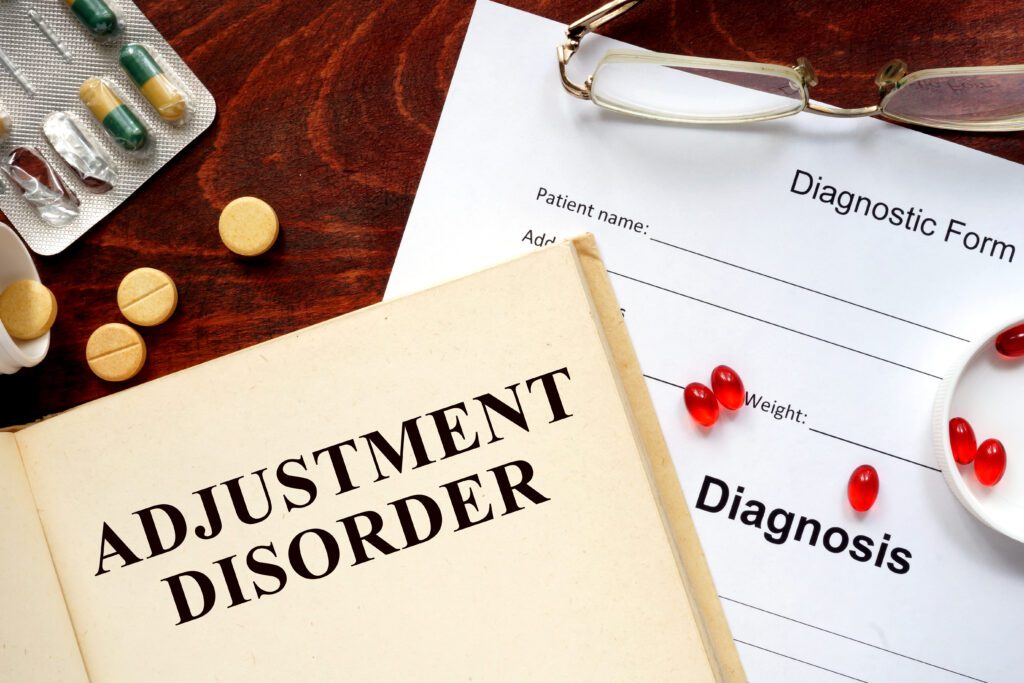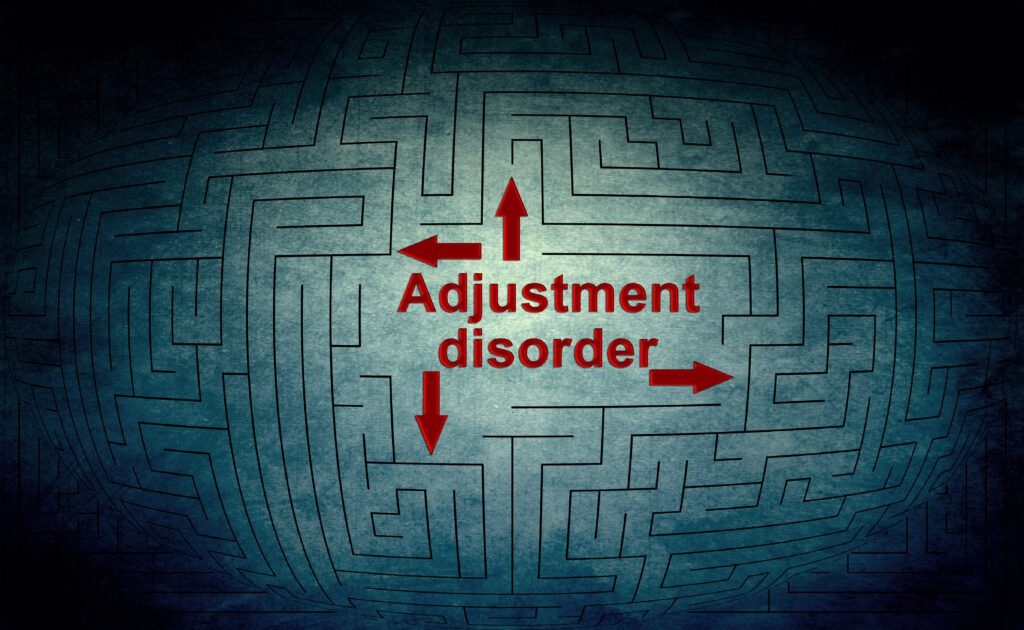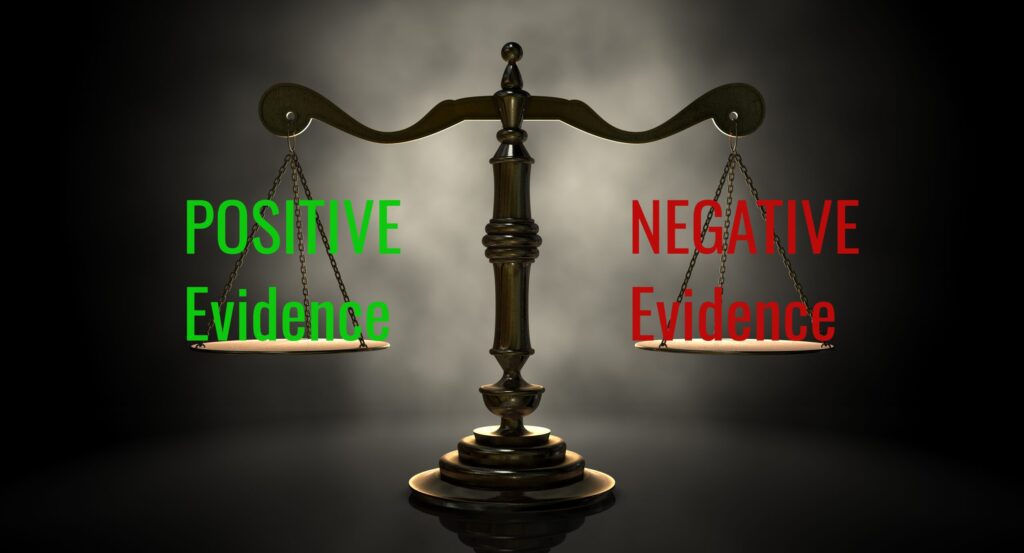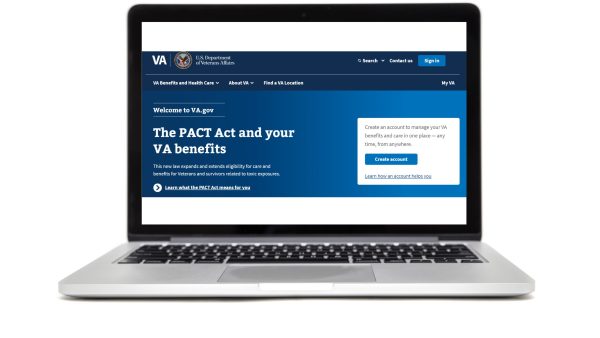Looking for Expert-Level VA Claim Help?📱Call Us Now! 737-295-2226
In this post, we’ll explore the top 3 ways to get a VA Rating for Adjustment Disorder even if you’ve already filed or been denied VA benefits.
Your final Adjustment Disorder VA Rating depends upon the Frequency, Severity, and Duration of symptoms to include “HOW” those symptoms affect your “Occupational and Social Impairment.”
VA Disability for Adjustment Disorder has ratings that range from 0% to 100% with breaks at 10%, 30%, 50%, and 70%.
Sometimes, the VA treats Adjustment Disorder as a “symptom” connected to another ratable mental health condition, such as Post Traumatic Stress Disorder (PTSD), Major Depressive Disorder, or Generalized Anxiety Disorder.
If you have more than one mental health condition diagnosed, the VA Rater will select and rate the one with the most severe symptoms.
Thus, it’s unlikely to receive a separate VA rating for Adjustment Disorder if you’re already rated for another mental health condition due to the avoidance of pyramiding.
Alright, let’s jump into this Insider’s Guide for getting service connected disability for Adjustment Disorder.
- What is Adjustment Disorder in Veterans?
- What are Common Signs and Symptoms of Adjustment Disorder?
- VA Disability Rating for Adjustment Disorder: Basic Eligibility Criteria
- Is Adjustment Disorder a VA Disability?
- How Do I Get an Adjustment Disorder VA Rating?
- How Do I Increase My Chronic Adjustment Disorder VA Rating?
- What is the Reasonable Doubt Rule for Adjustment Disorder?
- What is the VA Rating for Adjustment Disorder?
- What is the Adjustment Disorder VA Rating Scale?
- VA Ratings for Adjustment Disorder in 2022 – Frequently Asked Questions (FAQs)
- Can I get VA disability compensation for Adjustment Disorder?
- Is Adjustment Disorder a VA disability condition?
- What are the VA disability ratings for Adjustment Disorder?
- Can I receive Special Monthly Compensation for Adjustment Disorder?
- Can Adjustment Disorder be Permanent and Total (P&T)?
- Can the VA reduce my VA disability rating for Adjustment Disorder?
- How do I get a 100% VA disability for Adjustment Disorder?
- Can I work with a 100% VA Rating for Adjustment Disorder?
- Will mental health conditions affect my security clearance?
- About the Author
What is Adjustment Disorder in Veterans?

Adjustment Disorder is a stress-related condition where you have trouble coping with a stressful life event.
Let’s face it: In the military, we all experienced stressful events.
For example, temporary duty assignments, long deployments, high stress environments, separation from family and friends, death of loved ones or fellow service members, relationship problems, constant permanent change of stations (PCS), or being demoted or fired.
If you have an Adjustment Disorder, you experience more stress than would normally be expected in response to a stressful or unexpected event and the stress causes significant problems in your work, life, or social functioning.
Most of the time, people adjust to stress within a few months.
But if you have an Adjustment Disorder, you continue to have emotional or behavioral reactions that can contribute to anxiety, depression, and insomnia.
What are Common Signs and Symptoms of Adjustment Disorder?

Symptoms of an Adjustment Disorder start within 3 months of a stressful event and last no longer than 6 months after the end of the stressful event.
However, Chronic Adjustment Disorders can continue for more than 6 months.
Adjustment Disorder symptoms depend on the type of disorder you suffer from, and can vary from person to person.
Signs and Symptoms of Adjustment Disorder in Veterans:
- Feeling sad, hopeless, or not enjoying activities you used to enjoy (depression)
- Worrying, feeling anxious, nervous, jittery, or stressed
- Panick attacks
- Trouble sleeping (insomnia)
- Changes in appetite
- Trouble concentrating
- Feeling overwhelmed
- Difficulty functioning in daily activities
- Withdrawing from family and friends
- Avoiding important things, such as going to work or taking care of kids
- Increased sick days / sick leave
- Suicidal thoughts or behaviors
VA Disability Rating for Adjustment Disorder: Basic Eligibility Criteria

To be eligible for an Adjustment Disorder VA Rating, a veteran must meet three (3) criteria by law:
- #1. Medical diagnosis of Adjustment Disorder, in a medical record (Service Treatment Records, VA medical records, or private medical records)
- #2. Your Adjustment Disorder was caused or made worse by your active-duty military service OR by another service connected disability for secondary service connection (“Nexus” for service connection)
- #3. Persistent and recurring symptoms of Adjustment Disorder (“Severity of Symptoms”) to include how it affects your work, life, and social functioning
If you think you have a mental or sleep disorder such as Adjustment Disorder, but don’t have a medical diagnosis, pick-up the phone and call the VA mental health facility nearest you to make an appointment right away!
If you’re trying to increase your VA rating for Adjustment Disorder, you need to prove to the VA that your symptoms are now worse and warrant the higher rating criteria by law.
The #1 best way to increase your VA rating for Adjustment Disorder is to have objective medical evidence to show your symptoms have worsened over time.
Is Adjustment Disorder a VA Disability?

Yes, Chronic Adjustment Disorder is a VA disability and can be rated at 0%, 10%, 30%, 50%, 70%, or 100% depending upon the Frequency, Severity, and Duration of your symptoms as well as “how” those symptoms affect your “Occupational and Social Impairment” – meaning your work, life, and social functioning.
Adjustment Disorder is mental health condition rated under CFR Title 38, Part 4, Schedule for Rating Disabilities, Diagnostic Codes (DC) for Mental Disorders, 9440 Chronic Adjustment Disorder.
It’s important to note that the VA only rates “Chronic Adjustment Disorder,” which means your symptoms have persisted for longer than 6 months.
How Do I Get an Adjustment Disorder VA Rating?

There are 3 primary ways a veteran can get a VA disability rating for Adjustment Disorder:
#1: Direct service connection for Adjustment Disorder with a VA rating of 0%, 10%, 30%, 50%, 70%, or 100%. Depending upon your formal diagnosis, you might see Adjustment Disorder with Depressed Mood or Adjustment Disorder with Anxiety. Regardless of your diagnosis, they are all rated on the same scale from 0 percent to 100 percent.
#2: Secondary service connection for Adjustment Disorder connected to another service connected disability with a rating of 0%, 10%, 30%, 50%, 70%, or 100%. For instance, a veteran might be rated for Adjustment Disorder with Depressed Mood secondary to Tinnitus.
#3: Adjustment Disorder as a symptom of another ratable mental disorder such as PTSD, Depression, or Adjustment Disorder with a rating of 0%, 10%, 30%, 50%, 70%, or 100%. For example, a veteran could be service connected for Combat PTSD with Adjustment Disorder. The Adjustment Disorder is not rated on its own, but rather, as a contributing symptom to another mental health condition. This is very common because it’s difficult to differentiate symptoms of mental health across multiple diagnosis.
How Do I Increase My Chronic Adjustment Disorder VA Rating?

When VA Raters are determining the appropriate disability evaluation to assign for a Mental Health condition such as Adjustment Disorder, the primary consideration is a veteran’s current SYMPTOMS, however, VA Raters must also make findings as to “HOW” those symptoms impact a veteran’s “Occupational and Social Impairment.”
Does the veteran’s mental health condition limit or affect his/her work, life, and/or social functioning?
The average VA mental health rating for all veterans, across all demographics, is 70%, which is generally:
“Occupational and social impairment, with deficiencies in most areas, such as work, school, family relations, judgment, thinking, or mood.”
However, VA Raters can award a lower or higher rating (typically one level above or below) depending upon the Severity of Symptoms.
Because the use of the term “such as” in the Mental Health rating criteria demonstrates that the symptoms after that phrase are NOT intended to be an exhaustive list, VA Raters need not find the presence of all, most, or even some, of the enumerated symptoms to award a specific rating.
Nevertheless, all ratings in the general rating formula for Mental Health are also associated with observable symptomatology and the plain language of the regulation makes it clear that the veteran’s impairment must be “due to” those symptoms, a veteran may only qualify for a given disability rating by demonstrating the particular symptoms associated with that percentage, or others of similar Frequency, Severity, and Duration.
What is the Reasonable Doubt Rule for Adjustment Disorder?

The reasonable doubt rule, also known as the Benefit of the Doubt Doctrine, means that the evidence provided by the claimant/beneficiary (or obtained on his/her behalf) must only persuade the decision maker that each factual matter is “at least as likely as not.”
This means there’s a 50/50 chance. When, after careful consideration of all evidence, a reasonable doubt arises regarding service origin, the degree of disability, or any other point, such doubt will be resolved in favor of the claimant.
The courts further likened the reasonable doubt rule as akin to the principle in baseball that the “tie goes to the runner.”
When in doubt, the benefit is ALWAYS given to the veteran.
Independent providers and C&P examiners must consider and give weight to the veterans self-reported symptoms when completing their mental health evaluations and DBQs.
What is the VA Rating for Adjustment Disorder?

The VA rates Adjustment Disorders under CFR Title 38, Part 4, Schedule for Rating Disabilities, Diagnostic Codes (DC) 9440, Chronic Adjustment Disorder.
Adjustment Disorder can be rated at 0%, 10%, 30%, 50%, 70%, or 100% depending upon the Frequency, Severity, and Duration of your symptoms as well as “HOW” those symptoms affect your “Occupational and Social Impairment” – meaning your work, life, and social functioning.
The Adjustment Disorder with Anxiety VA rating is rated on this same scale from 0 percent to 100 percent.
What is the Adjustment Disorder VA Rating Scale?
| VA Rating for Adjustment Disorder | VA Rating |
| Chronic Adjustment Disorder with total occupational and social impairment, due to such symptoms as: gross impairment in thought processes or communication; persistent delusions or hallucinations; grossly inappropriate behavior; persistent danger of hurting self or others; intermittent inability to perform activities of daily living (including maintenance of minimal personal hygiene); disorientation to time or place; memory loss for names of close relatives, own occupation, or own name. | 100% |
| Chronic Adjustment Disorder with occupational and social impairment, with deficiencies in most areas, such as work, school, family relations, judgment, thinking, or mood, due to such symptoms as: suicidal ideation; obsessional rituals which interfere with routine activities; speech intermittently illogical, obscure, or irrelevant; near-continuous panic or depression affecting the ability to function independently, appropriately and effectively; impaired impulse control (such as unprovoked irritability with periods of violence); spatial disorientation; neglect of personal appearance and hygiene; difficulty in adapting to stressful circumstances (including work or a worklike setting); inability to establish and maintain effective relationships. | 70% |
| Chronic Adjustment Disorder with occupational and social impairment with reduced reliability and productivity due to such symptoms as: flattened affect; circumstantial, circumlocutory, or stereotyped speech; panic attacks more than once a week; difficulty in understanding complex commands; impairment of short- and long-term memory (e.g., retention of only highly learned material, forgetting to complete tasks); impaired judgment; impaired abstract thinking; disturbances of motivation and mood; difficulty in establishing and maintaining effective work and social relationships. | 50% |
| Chronic Adjustment Disorder with occupational and social impairment with occasional decrease in work efficiency and intermittent periods of inability to perform occupational tasks (although generally functioning satisfactorily, with routine behavior, self-care, and conversation normal), due to such symptoms as: depressed mood, Adjustment Disorder, suspiciousness, panic attacks (weekly or less often), chronic sleep impairment, mild memory loss (such as forgetting names, directions, recent events). | 30% |
| Chronic Adjustment Disorder with occupational and social impairment due to mild or transient symptoms which decrease work efficiency and ability to perform occupational tasks only during periods of significant stress, or symptoms controlled by continuous medication. | 10% |
| Chronic Adjustment Disorder has been formally diagnosed, but symptoms are not severe enough either to interfere with occupational and social functioning or to require continuous medication. | 0% |
Now that we know how the VA rates Adjustment Disorders (0% to 100%), let’s explore each rating percentage in-detail along with the severity of symptoms at each level.
0 Percent Rating for Adjustment Disorder
A mental condition has been formally diagnosed, but symptoms are not severe enough either to interfere with occupational and social functioning or to require continuous medication.
This means you have a formal diagnosis of Adjustment Disorder, but no symptoms.
Perhaps your symptoms are controlled by continuous use of medication.
You have no occupational and social impairment at the 0% rating.
10 Percent VA Rating for Adjustment Disorder
Occupational and social impairment due to mild or transient symptoms which decrease work efficiency and ability to perform occupational tasks only during periods of significant stress, or symptoms controlled by continuous medication.
Translation: You have very mild symptoms of Adjustment Disorder.
Maybe you take SSRIs (antidepressants), but these medications keep your symptoms in check.
You may have minor bouts of depression and anxiety every so often, but not routinely.
30 Percent VA Disability Rating for Adjustment Disorder
Occupational and social impairment with occasional decrease in work efficiency and intermittent periods of inability to perform occupational tasks (although generally functioning satisfactorily, with routine behavior, self-care, and conversation normal), due to such symptoms as: depressed mood, anxiety, suspiciousness, panic attacks (weekly or less often), chronic sleep impairment, mild memory loss (such as forgetting names, directions, recent events).
The 30 percent rating for Adjustment Disorder still has mild symptoms.
Perhaps you have some depression, anxiety, suspiciousness, mild memory loss, insomnia, and panic attacks, but not very often.
Typically, you’re having panic attacks less than once per week.
While there are some Adjustment Disorder symptoms at the 30 percent level, they are generally minor and there is minimal disruption to occupational and social impairment.
50 Percent Adjustment Disorder VA Rating
Occupational and social impairment with reduced reliability and productivity due to such symptoms as: flattened affect; circumstantial, circumlocutory, or stereotyped speech; panic attacks more than once a week; difficulty in understanding complex commands; impairment of short- and long-term memory (e.g., retention of only highly learned material, forgetting to complete tasks); impaired judgment; impaired abstract thinking; disturbances of motivation and mood; difficulty in establishing and maintaining effective work and social relationships.
At the 50 percent VA rating for Adjustment Disorder, you’re having moderate symptoms.
The biggest difference between the 30% and 50% rating is that at this level, you’re having panic attacks more than once per week and trouble in your relationships at work and in social settings.
Perhaps you don’t have any friends or just want to be alone in your house.
Maybe you’ve lost interest in activities or hobbies you once enjoyed, displaying moderate levels of depression.
You may even be divorced or can’t get along with your spouse or with your boss and coworkers anymore (angry outbursts and rage).
70 Percent VA Rating for Adjustment Disorder
Occupational and social impairment, with deficiencies in most areas, such as work, school, family relations, judgment, thinking, or mood, due to such symptoms as: suicidal ideation; obsessional rituals which interfere with routine activities; speech intermittently illogical, obscure, or irrelevant; near-continuous panic or depression affecting the ability to function independently, appropriately and effectively; impaired impulse control (such as unprovoked irritability with periods of violence); spatial disorientation; neglect of personal appearance and hygiene; difficulty in adapting to stressful circumstances (including work or a work like setting); inability to establish and maintain effective relationships.
The 70 percent VA rating for Adjustment Disorder has severe symptoms and is a significant jump from the 50 percent level.
70 percent is the average VA rating for veterans who are service connected and rated for Chronic Adjustment Disorder.
The average Adjustment Disorder with depressed mood VA rating is also 70%.
Notice the keyword change to “deficiencies in most areas.”
Maybe you constantly check windows and doors in your home or have other obsessive rituals as you go about your day, such as a video camera monitoring system around your property.
You’re having constant panic attacks, with severe depression and anxiety.
You get lost even driving on the same roads, even with a GPS (special disorientation).
You think about suicide often, meaning you’re having thoughts or even making plans.
You are unable to establish and maintain effective relationships at work and in social settings.
You have severe anger issues and paranoia, and maybe you don’t feel comfortable leaving your own home.
100 Percent VA Disability Rating for Adjustment Disorder
Total occupational and social impairment, due to such symptoms as: gross impairment in thought processes or communication; persistent delusions or hallucinations; grossly inappropriate behavior; persistent danger of hurting self or others; intermittent inability to perform activities of daily living (including maintenance of minimal personal hygiene); disorientation to time or place; memory loss for names of close relatives, own occupation, or own name.
The 100 percent rating for Adjustment Disorder has the most severe symptoms under the law.
It’s rare to see a veteran exhibit the preponderance of symptoms at this level simply because they are so severe.
Notice the keyword change to “total occupational and social impairment.”
This means you have total impairment of your work and life.
Maybe you lost a job due to Adjustment Disorder and are now unemployed.
Or perhaps you can’t work because your Adjustment Disorder, depression, and anxiety symptoms are so severe.
This is the first time we see the introduction of delusional thoughts, hallucinations, and grossly inappropriate behavior.
Severe memory loss and occasional inability to care for oneself are now present at the 100 percent rating level.
You might even require the Aid and Attendance of another person to help take care of you.
You could also be “Housebound,” meaning you spend most of your time in your home because of a permanent disability for Adjustment Disorder.
VA Ratings for Adjustment Disorder in 2022 – Frequently Asked Questions (FAQs)

Can I get VA disability compensation for Adjustment Disorder?
Yes, the Department of Veterans Affairs (VA) will pay veterans with service-connected Adjustment Disorder tax free compensation each month.
The amount of compensation depends upon your overall VA rating.
For example, a 10% rating is worth around $150 each month whereas a 100% rating is worth around $3,000 per month.
Is Adjustment Disorder a VA disability condition?
Yes, Adjustment Disorder is a VA disability and can be rated from 0% to 100% depending upon the severity of your symptoms.
Often times, Adjustment Disorder is an underlying symptoms of another mental health condition such as PTSD, Major Depressive Disorder, or Somatic Symptom Disorder.
Due to the legal concept called avoidance of pyramiding, a veteran will only receive one VA rating for a mental health condition.
The VA recognizes Adjustment Disorder Disorders as one of 31 mental health conditions that may be related to service, and thus, Adjustment Disorder is a VA disability, and is eligible for VA compensation and benefits under the law.
What are the VA disability ratings for Adjustment Disorder?
The VA will give you a disability rating based upon the severity of your Adjustment Disorder, specifically related to your level of occupational and social impairment.
If you are considered service-connected for Adjustment Disorder, you will receive one of six (6) possible VA disability ratings for your mental health condition, broken out as follows: 0%, 10%, 30%, 50%, 70%, or 100%.
In 2022, the average VA disability rating for Adjustment Disorder is 70%.
Can I receive Special Monthly Compensation for Adjustment Disorder?
Yes! VA Special Monthly Compensation under Category S is given if the veteran has at least one condition rated 100% AND one or both of the following:
#1. You are completely and permanently housebound because of his service-connected conditions, meaning that the veteran cannot leave his area of abode (this can include his own home, a hospital ward, or a care facility) at all, and this is expected to be the case for the rest of his life OR
#2. You have another condition rated 60% or group of conditions together rated 60% that are unrelated to the 100% condition. For example, you have GERD rated at 60% and Generalized Adjustment Disorder Disorder rated at 100%.
Veterans can get an extra $397.88 each month, tax-free, if you meet the Adjustment Disorder Disorder housebound criteria known as SMC-S.
Can Adjustment Disorder be Permanent and Total (P&T)?
Some veterans may receive a permanent and total rating, also known as 100% P&T. If your Adjustment Disorder Disorder is not expected to improve, you may obtain the status of permanent and total disability.
Can the VA reduce my VA disability rating for Adjustment Disorder?
Yes. Unfortunately, sometimes the VA will lower a veteran’s VA rating for Adjustment Disorder. If that happens to you, obtain new and relevant medical evidence for your Adjustment Disorder condition, and challenge the VA’s decision to lower your rating.
How do I get a 100% VA disability for Adjustment Disorder?
Your Adjustment Disorder must be severe enough to warrant a 100% rating. Many veterans do obtain a higher VA rating for Adjustment Disorder using VA Claims Insider’s proven proprietary education-based Coaching and Consulting process, including credible Medical Nexus Letters for Mental Health.
Can I work with a 100% VA Rating for Adjustment Disorder?
Yes, you can! It is a myth that having a mental health condition somehow means you can’t work. In fact, you can work with any Adjustment Disorder VA rating. Even if you’re rated at 100% for Adjustment Disorder, there is no requirement or mandate that affects your work.
Will mental health conditions affect my security clearance?
It is a MYTH that having Adjustment Disorder, PTSD, Depression, Anxiety, or any other mental health condition will affect your security clearance. Of course, you’ll need to report it to your security manager and update your SF 86; however, it has no impact on your security clearance (in our experience serving 15,000+ veterans with a mental health condition since 2016).
About the Author

Brian Reese
Brian Reese is a world-renowned VA disability benefits expert and the #1 bestselling author of VA Claim Secrets and You Deserve It. Motivated by his own frustration with the VA claim process, Brian founded VA Claims Insider to help disabled veterans secure their VA disability compensation faster, regardless of their past struggles with the VA. Since 2013, he has positively impacted the lives of over 10 million military, veterans, and their families.
A former active-duty Air Force officer, Brian has extensive experience leading diverse teams in challenging international environments, including a combat tour in Afghanistan in 2011 supporting Operation ENDURING FREEDOM.
Brian is a Distinguished Graduate of Management from the United States Air Force Academy and earned his MBA from Oklahoma State University’s Spears School of Business, where he was a National Honor Scholar, ranking in the top 1% of his class.




